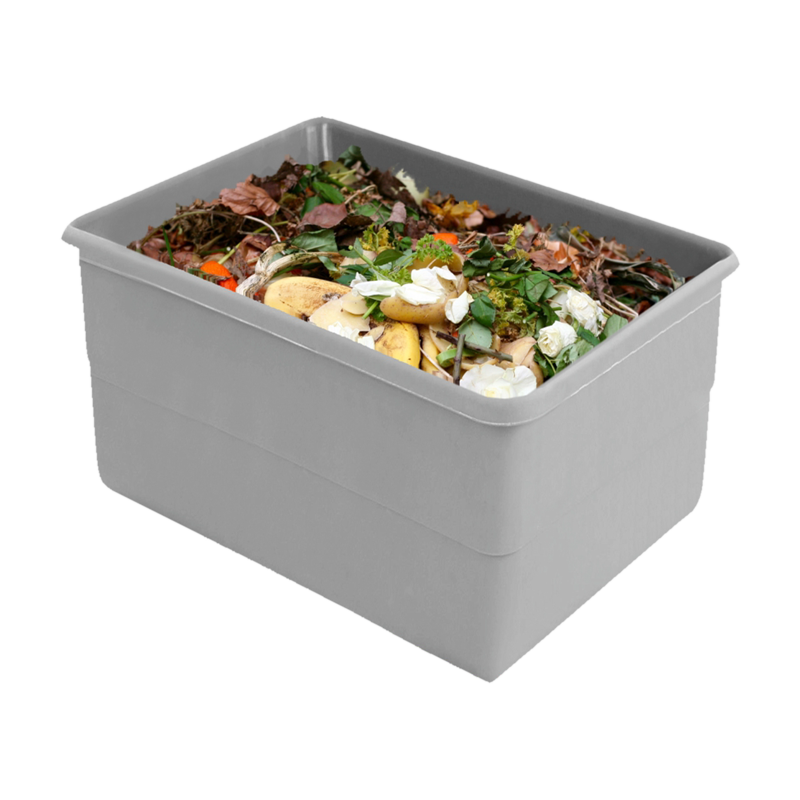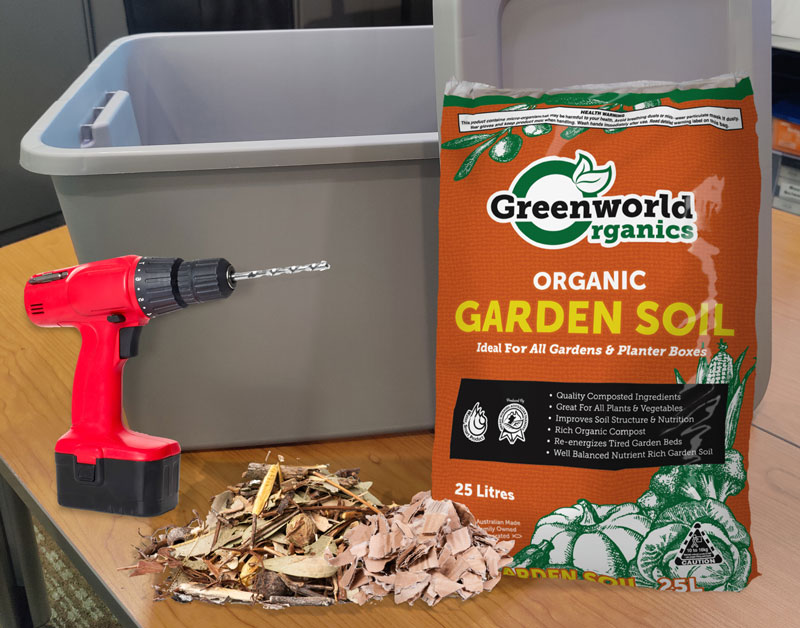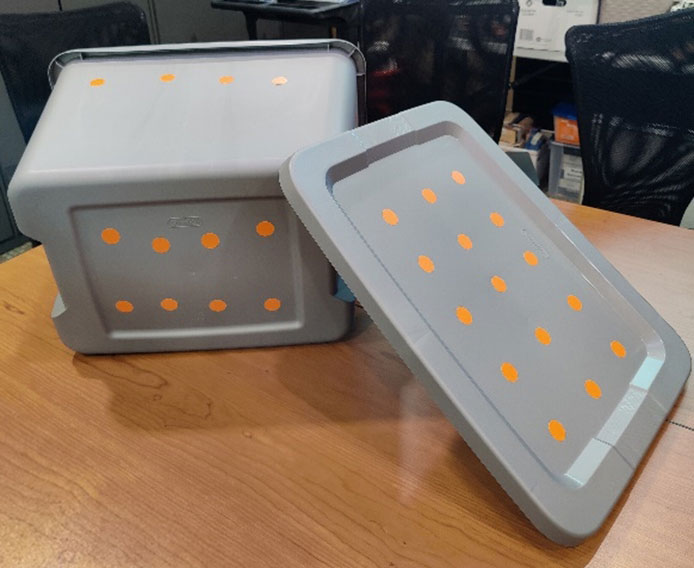Compost Crazy
This activity will walk you through the process of creating a compost bin that can be used to create nutrient rich compost to help cultivate your indoor plants or an outdoor garden!
Fun Facts/Information

- Composting is an eco-friendly way to reduce landfill waste and create a nutrient-rich fertilizer for gardens. It also improves soil health, reduces greenhouse gas emissions, and recycles nutrients.
- Although it looks similar, compost is not soil and cannot be used exclusively for plants to grow in. Rather, it is used in combination with soil to provide nutrient enrichment and assist in water retention.
Materials:
- One plastic container approx. 10 gallon volume, with lid
- A drill (adult help will be needed)
- Soil
- "Brown materials" (this can be anything from dried leaves, cardboard, newspaper, wood shavings, shredded paper)

Procedure:
Step 1 :
:
Drill approximately fifteen ½" holes into the lid of the bin, around ten holes into the bottom of the bin and another ten around the perimeter of the bin approximately 4-5 inches from the top/lip
(hole placement indicated with orange stickers).
Step 2:
Place a layer of newspaper first followed by other "brown materials" onto the floor of the bin and add a layer of dirt/compost. Repeat this layering process 3 times (you want to end up with about 8 inches of material).
Step 3:
Now you can start adding your food scraps. Anything that we eat as humans can be composted! However, in this controlled environment it is best to avoid certain foods. Be careful adding too much fruit and other scraps with high water content as this can over-saturate the environment and lead to molding. The contents of the bin should be damp but not wet. If it is noticeably wet, add more brown materials to moderate moisture. Refer to the composting guide for maintaining a healthy compost.
PLEASE NOTE: Food scraps can be added to your compost bin by simply dumping them on top of old materials, no need to get your hands dirty.
Compost Guide
| Do's | Dont's |
|---|---|
| Fruit and vegetable scraps: Including peels, plate scrapings, and tops of vegetables like peppers, zucchini, and cucumber | Citrus fruits |
| Grains: Including breads, cereals, rice, and pastas | Odorous foods like onions and garlic |
| Coffee and tea: Including coffee grounds and unbleached paper filters, and tea bags without staples | Meat, dairy, bones, greasy foods |
| Eggs: Including eggshells and cooked eggs | Plastic, metal, and glass |
| Other: Including nut shells, fruit pits, bottle corks, and cooked foods like beans, sauces, soups, and casseroles | Pet waste |
| Plants or weeds treated with pesticides |
You will see noticeable compost accumulation in approximately 2-3 months!
Compost can be added onto the top layer of soil used for planting, rain and watering will naturally pull the nutrients into the soil for the plants to absorb!
Quick Links
Where are Activities Available?
We partner with over 600 educational organizations.
See our school locator